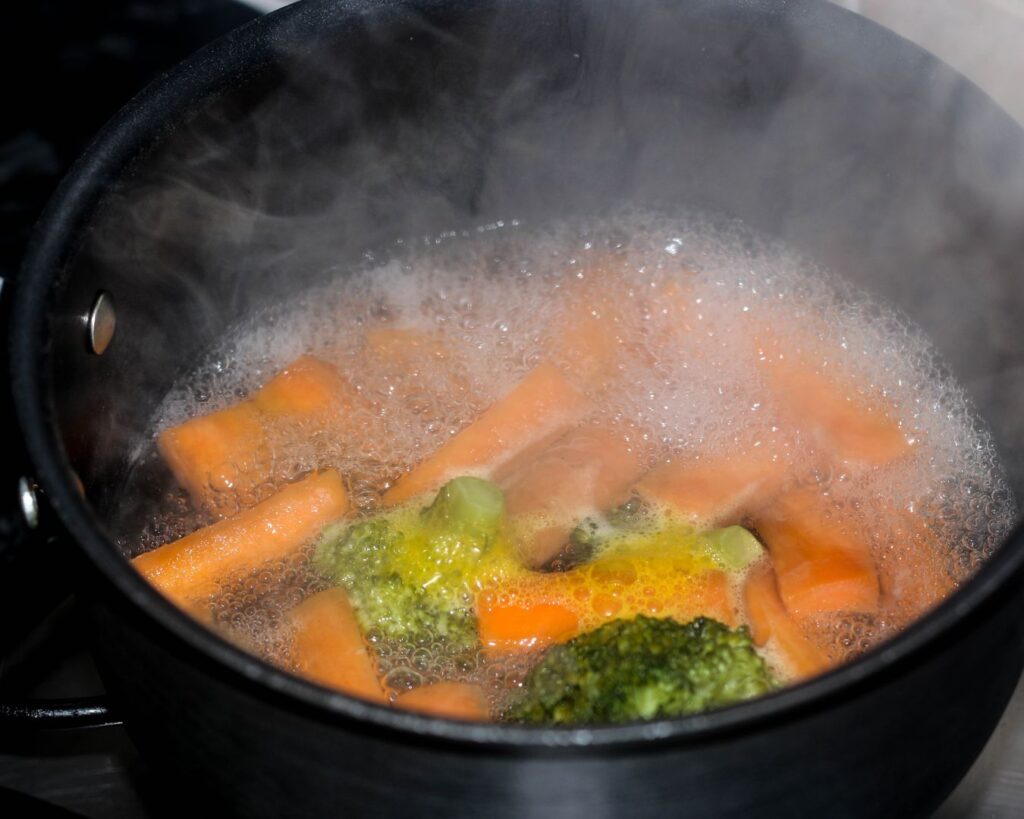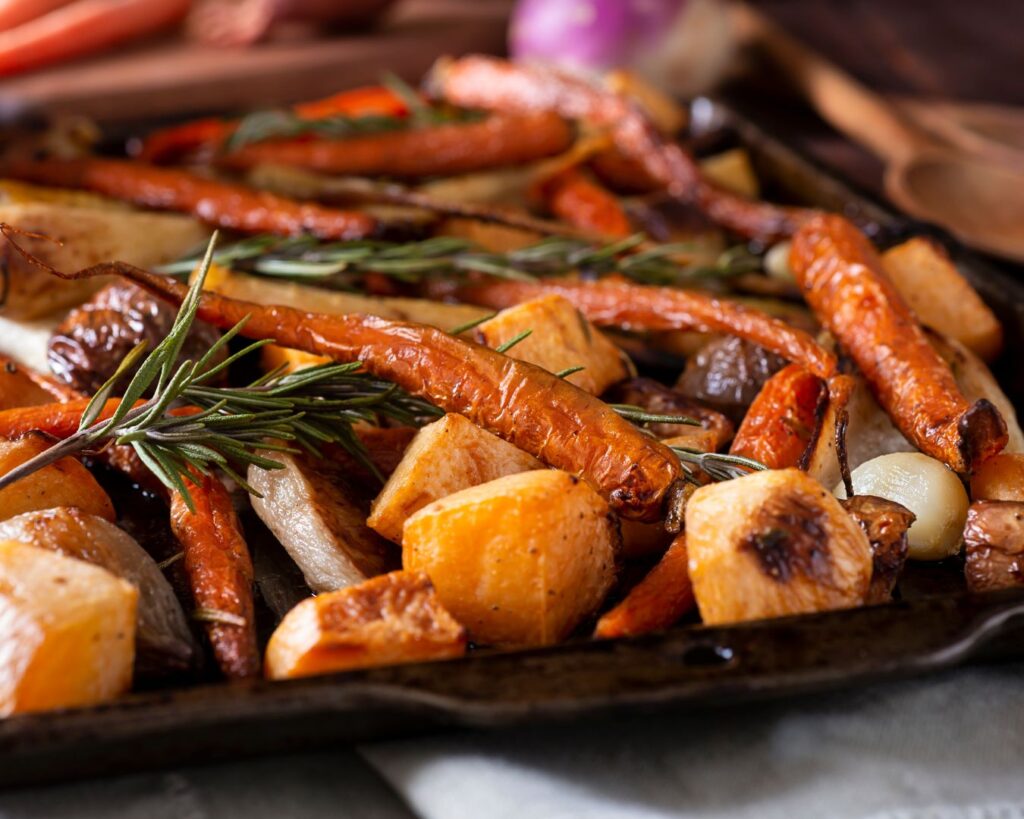Different Cooking Methods for Root Vegetables: Roasting, Mashing, Frying, and More
Root vegetables, such as potatoes, carrots, beets, and parsnips, are versatile and nutritious ingredients that can be prepared in a variety of ways. Their hearty texture and natural sweetness make them a staple in many cuisines around the world. In this blog post, we’ll explore different cooking methods for root vegetables, each bringing out unique flavors and textures. Whether you’re looking to roast, mash, fry, or try something new, there’s a method to suit every palate.
Roasting: Enhancing Natural Sweetness
Roasting is one of the most popular methods for cooking root vegetables. This technique involves cooking the vegetables in a hot oven, which caramelizes their natural sugars and enhances their flavors.
- How to Roast: Preheat your oven to 400°F (200°C). Cut your root vegetables into even pieces to ensure uniform cooking. Toss them in olive oil, salt, pepper, and any herbs or spices you prefer. Spread the vegetables on a baking sheet in a single layer. Roast for 25-45 minutes, depending on the size of the pieces, turning once halfway through.
- Best Vegetables for Roasting: Potatoes, carrots, sweet potatoes, beets, and parsnips.
- Flavor Tips: Add garlic, rosemary, or thyme for extra flavor. A drizzle of honey or balsamic vinegar before roasting can also enhance the sweetness.
Benefits: Roasting brings out the natural sweetness of root vegetables and gives them a crispy exterior with a tender inside.
Mashing: Comfort in Every Bite
Mashing root vegetables creates a creamy, comforting dish that’s a great alternative to traditional mashed potatoes. This method is perfect for creating smooth, buttery side dishes.
- How to Mash: Boil your root vegetables until they are tender. Drain and return them to the pot or place them in a mixing bowl. Add butter, cream, or milk, and mash until smooth. You can also use a food processor for an extra creamy texture. Season with salt, pepper, and any additional spices like nutmeg or garlic powder.
- Best Vegetables for Mashing: Potatoes, sweet potatoes, turnips, and parsnips.
- Flavor Tips: Experiment with mixing different root vegetables for a unique flavor combination, such as mixing potatoes with parsnips or adding roasted garlic for depth.
Benefits: Mashing is a versatile method that allows you to create a variety of flavors and textures, from rustic and chunky to silky and smooth.
Frying: Crispy and Satisfying
Frying is a method that adds a crispy exterior to root vegetables, making them irresistibly delicious. Whether you’re frying in a pan or deep-frying, this technique creates a satisfying crunch.
- How to Fry: Cut your root vegetables into thin slices or sticks. Heat oil in a frying pan over medium-high heat or prepare a deep fryer. Once the oil is hot, add the vegetables in batches, frying until golden brown and crispy. Drain on paper towels to remove excess oil and season with salt immediately.
- Best Vegetables for Frying: Potatoes (for fries or chips), sweet potatoes, beets, and parsnips.
- Flavor Tips: Sprinkle with fresh herbs, like rosemary or parsley, or add a dash of paprika or garlic powder for an extra kick.
Benefits: Frying gives root vegetables a crispy texture that’s perfect for snacks or side dishes.

Boiling: Simple and Nutritious
Boiling is one of the simplest methods for cooking root vegetables. It’s quick, easy, and preserves the natural flavors of the vegetables.
- How to Boil: Peel and chop your root vegetables into even pieces. Place them in a pot of salted water, bring to a boil, and cook until tender, about 10-20 minutes depending on the vegetable. Drain and serve as is, or use in other recipes like mashing or pureeing.
- Best Vegetables for Boiling: Potatoes, carrots, turnips, and beets.
- Flavor Tips: Enhance the flavor by boiling in vegetable broth or adding bay leaves, garlic, or herbs to the water.
Benefits: Boiling is a straightforward method that retains the nutrients in root vegetables and prepares them for other dishes.
Steaming: Retaining Nutrients and Flavor
Steaming is a gentle cooking method that preserves the nutrients and natural flavors of root vegetables. It’s ideal for those who prefer a simple, healthy preparation.
- How to Steam: Cut your root vegetables into uniform pieces. Place them in a steamer basket over boiling water. Cover and steam until tender, usually 10-20 minutes depending on the vegetable. Season as desired.
- Best Vegetables for Steaming: Carrots, potatoes, parsnips, and turnips.
- Flavor Tips: Finish with a squeeze of lemon juice, a drizzle of olive oil, or a sprinkle of fresh herbs to enhance the natural flavors.
Benefits: Steaming preserves the color, texture, and nutritional value of root vegetables while keeping them tender.

Grilling: Smoky and Charred Goodness
Grilling root vegetables adds a smoky flavor and appealing charred edges, making them a perfect addition to summer barbecues or as a side dish.
- How to Grill: Preheat your grill to medium-high heat. Slice your root vegetables into thick pieces to prevent them from falling apart. Toss with olive oil, salt, and pepper. Grill the vegetables directly on the grates or use a grill basket, turning occasionally until they are tender and charred, about 10-15 minutes.
- Best Vegetables for Grilling: Sweet potatoes, carrots, beets, and parsnips.
- Flavor Tips: Brush with a mixture of olive oil and balsamic vinegar before grilling for added flavor. Garnish with fresh herbs before serving.
Benefits: Grilling imparts a unique, smoky flavor to root vegetables and adds a satisfying char that enhances their natural sweetness.
Root vegetables are incredibly versatile, offering a range of textures and flavors depending on the cooking method you choose. Whether you prefer the sweetness brought out by roasting, the creamy comfort of mashing, the crispiness of frying, or the simplicity of boiling and steaming, there’s a method to suit every taste. Experiment with different techniques to find your favorite way to enjoy these nutritious and delicious vegetables.

